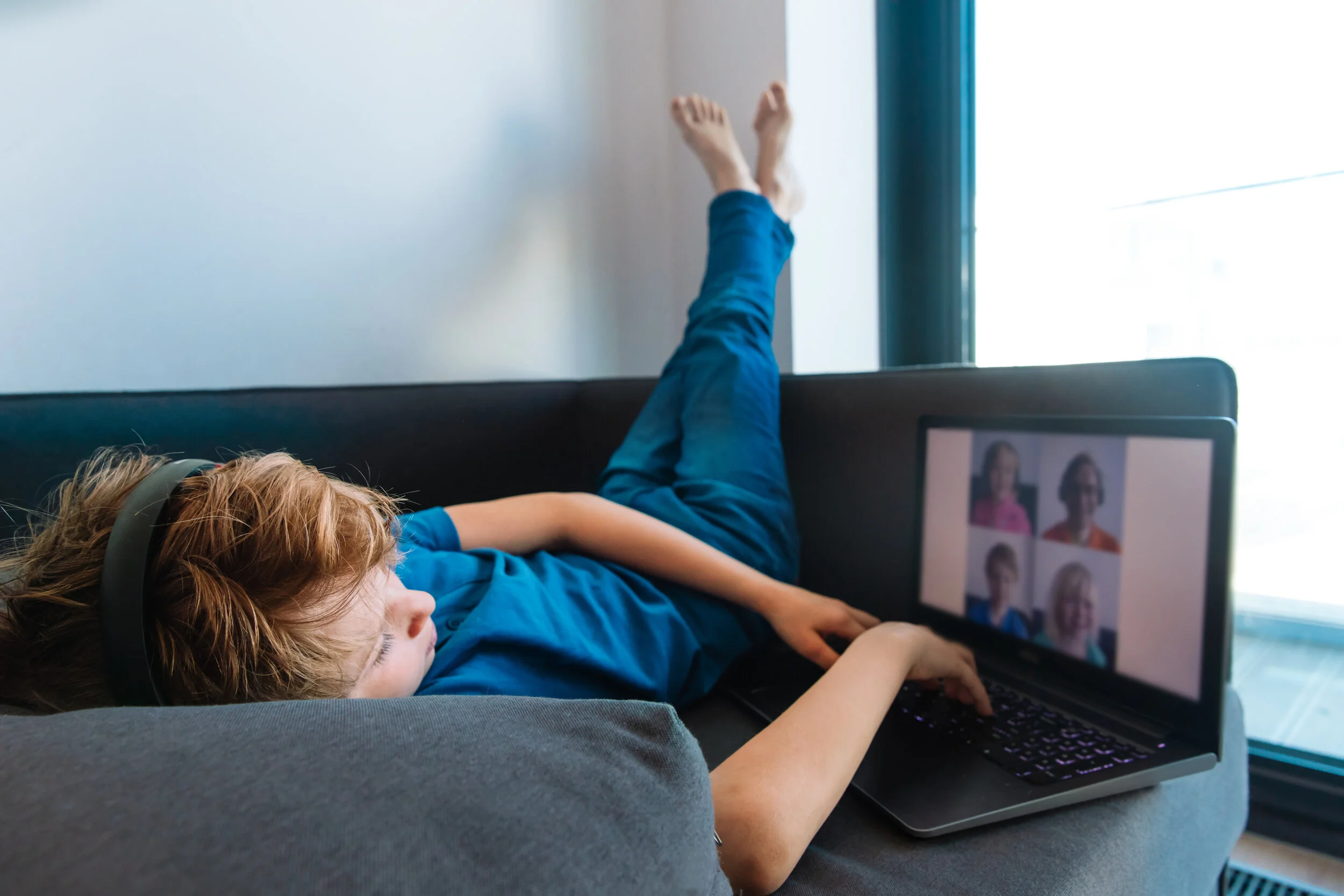What Happened to Screen Time Worries?
Prior to COVID, of the twenty questions I got during every pediatrician appointment, “screen time” was always in the top five -- somewhere between asking about wearing bike helmets and if we had a loaded gun in the house.
For years, the American Academy of Pediatrics (AAP) has advised that school-aged children should only get 1-2 hours of screen time per day, depending on their age. Yet in our COVID world, for students learning remotely, the number of daily screen hours are now a requirement and are likely much higher than the AAP maximum. Many pediatricians have stopped asking about screen time this year. Instead of waving flags about this, we’re waiving the flags entirely. We’re so concerned that our kids will get behind in school, or that we won’t be able to focus on our own work, that we’re discounting what medical professionals have been telling us for years.
Perhaps it’s because we think we don’t have a choice.
To keep students academically on track, school districts nationwide have chosen to disregard medical guidelines during pandemic school, enrolling students in screen-based classes almost triple the amount of time that was previously considered by the AAP to be the tolerable maximum. Many parents have told me they’ve given up on screen time limits during COVID-19 because it seems like a lost cause. They see it as a cost-benefit analysis: Keeping kids virus-free and keeping education going seem more important than the risks involved with computers and iPads.
Or is it? Prior to COVID, the AAP was pretty clear about the permanent impacts of screen exposure on neurological health and development. So, why have we stopped talking about this important part of our children’s holistic health as part of the broader COVID-health conversation?
More importantly, why are we setting up this false dichotomy of education versus screens? Much to our discomfort, COVID is forcing us to reevaluate and redefine education -- a system in the U.S. which looks pretty much the same now as it did 100 years ago.
One alternative to screen-based learning is to consider shifting remote learning to a college-like schedule for junior high and high school students, where schooling is less about time spent in the seat/screen and more about the product and proof of what was learned. This would enable students to meet only once or twice a week online, and the remainder of the time could be spent pursuing independent study or getting help through office hours. (And, for those wondering about social needs, with this model the daily allowance for screen time could be reserved for fun with peers.)
A second alternative, for elementary through high school, is for school systems to develop reading programs that dovetail literature with history and science through narrative works, sending paperbacks to students’ homes via school bus routes and collecting hand-written papers for those without access to computers or looking for creative ways to minimize screen time.
Screens not only expose children to unnecessary neurological risks, they risk widening the gap between the haves and have-nots. So, why not look for creative ways to reduce both? Even if this strategy condenses learning for all, wouldn’t the decreased risks be worth it? Potentially impairing our children’s neurological growth (and widening the education gap) in order to educate this year seems self-defeating.
For parents frustrated by the ill effects or disappointing lack of social connection of screen usage, many are choosing a third alternative-- to homeschool in a traditional model. Contrary to what some may assume, homeschooling can be a viable alternative for dual income households. Homeschooling gives parents the flexibility to teach their children during off-peak work hours, customizing it to the needs of their family. Parents who choose to homeschool also have the option to limit or eliminate screens completely from their children's education.
Screen time has been proven to lead to headaches, eye strain, blurry vision, and sleep problems. Additionally, a study published in the Journal of Ophthalmology & Research shows how lighting levels may create additional eye strain when switching between screens and papers for hours at a time. Extensive screen-based learning as it is currently being used may solve some problems, but it is also creating significant new ones.
Parents still have choices--to either encourage schools to pare back screen time or to choose an alternative learning model during COVID, such as homeschooling. It’s not too late to switch to homeschooling. And it’s possible to give our kids a stellar education from home while encouraging healthy habits during this pandemic.

